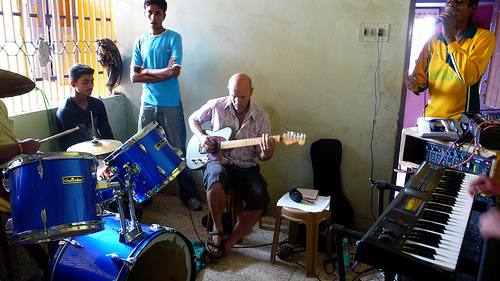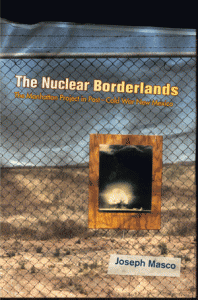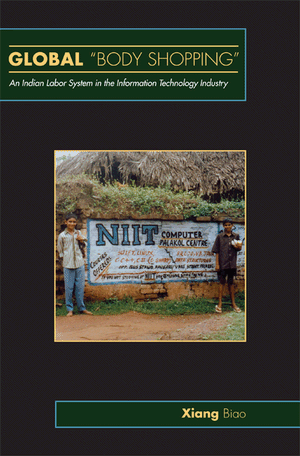“It is easy – commonplace – for anthropologists to have an opinion on “the war” and to think that our opinions are worth hearing. But those opinions are more informed, nuanced, and will carry further if they are shaped by the close, yet open-minded, encounters with ground level realities, and practice, whose importance we, and our disciplinary forbears, have worked so hard to promote.” – p. 327 in Keith Brown and Catherine Lutz, “Grunt Lit: The participant observers of empire.” AE 34:2, 322-328.
For Brown and Lutz, the autobiographical accounts of soldiers provide a window into the messy and chaotic instantiation of empire in war, and are worth submitting to what Lutz calls “[the] discipline’s standard tropes of person-centered, contextualized understanding” (Lutz 2006 in AE, 33:4, p. 593). Along these lines, the interrogation records of the GWOT should be subject to the same ethnographic scrutiny. If nothing else, they reveal that (to paraphrase Clausewitz) interrogation is the extension of war by other means, as a complex ideological conflict is waged discursively in the context of the prison interrogation room.
To make this point, I’ll share a very abbreviated draft of article I’m writing, for which I draw on a subset of roughly 500 pages of documents dealing with FBI interrogation at Guantanamo Bay, Cuba, between February 2002 and July 2004. Within this collection, there are approximately fifty FBI “transcriptions” (which are perhaps better described as summaries of interviews, “interview” being FBI parlance for interrogation). Because many are heavily redacted, it can be hard to discern where one interview ends and another begins. Reading these is akin to listening to a radio broadcast between bursts of heavy static, or watching a movie interrupted by sporadic blackouts. Although the interview transcriptions do use proper names, identifying information is always redacted; and for convenience, I am following FBI convention in referring to the parties as “interviewers” and “detainees.” I use a bracketed ellipsis to denote redactions […], and I quotations to the official document number so that interested readers can look up the source material (e.g., 4042).
Redactions notwithstanding, this collection provides fascinating insight into the manifold ways in which “culture” makes its presence felt. As Robert Rubinstein points out in his forthcoming book, Peacekeeping Under Fire: Culture and Intervention (Paradigm 2008), culture operates at many levels in UN peacekeeping efforts. He identifies three interlocking cultural dynamics that shape the trajectory of these operations: interactions between peacekeepers and local populations; interactions between participating local and national bureaucracies; and in a meta-sense, as international perceptions of “peacekeeping” evolve politically and institutionally.
Similarly, cultural dynamics operate at multiple levels in interrogation. At its most basic, interrogation aims to get specific information for specific purpose: for example, to develop a criminal case, obtain a confession, or provide “actionable intelligence” that can be used in tactical decision-making. That interviewers are seeking such information is apparent when detainees are asked to explain their presence at an Al Qaeda training camp, or shown photos of other detainees and asked to identify co-conspirators (e.g., 3904). However, far more is going on in these FBI interviews than attempts to elicit specific facts from recalcitrant detainees. In the interrogation encounter, detainees and interviewers look at each other across the table and, with the help of a translator (who is always silent in the transcriptions), they dive into a discursive exchange that reaches far beyond the confines of the interrogation room.
For example, interviewer-detainee exchanges shed light on the dynamics of guard-prisoner interactions in detention operations at Guantánamo. Often, the detainees complain to the interviewers about mistreatment by military police: roughing up prisoners, insulting detainees, and disrespecting the Koran are all sore points among the detainee population. But the weak have weapons: in one interview, a detainee gives the interviewers advice for how guards should comport themselves in front of the detainees – and in doing so, hints at vibrant hidden transcript, in which the projection of state power, embodied in the masculine form of the military police guard, is undermined by a simple technology:
Detainees see the guards as babies, especially the “big American guards that fill the doorway.” This is because the guards are supposed to be strong, yet they walk around with a “camel” (a backpack water storage device with a drinking tube attached) on their back sucking on a tube of water all of the time. A strong man is able to go without water for long periods of time. (The detainee) suggested that the water be kept out of sight of the prisoners and have the guards walk to where the water is kept. (3913)
Secondly, the records illustrate how detainees under interrogation challenge the official transcript of GWOT internment with complex counter-narratives about such topics as the war in Afghanistan (e.g., 3906), jihad and September 11 (e.g., 3899, 4080, 3845, 3844, 3850), American imperialism and foreign policy (e.g., 3918-21, 3912, 3913, 3916, 3925, 3842, 3861, 4086), and the fact that the detention operation at Guantanamo violates legal rights guaranteed by the US Constitution (3924). Along the way, the detainees also share their views on Christianity (e.g., 3906), Israel and Judaism (e.g., 4026), popular culture and sexuality (e.g., 3921), proper treatment of the Koran (e.g., 4803, 4024) and privacy of the body and shame (e.g., 3836, 3854, 4061). Sadly, there are also numerous descriptions of physical abuse, mostly beatings, particularly when the detainees are initially arrested either by Northern Alliance (e.g., 3903) or US troops (e.g., 3892).
But just as the detainees challenge the official discourse of the GWOT, we can see the FBI interviewers developing their own counter-narratives of Islam for the purpose of convincing the detainees that they should share what they know about Al Qaeda, terrorism, 9/11, and the Taliban. The manipulation is psychological, playing heavily on old-fashioned self-interest, but is arguably cultural, too, insofar as the manipulation draws on a framework of religious beliefs. For example, in one transcription (4033-4034), the interviewing agents show the interviewee a movie and photographs of people dying in New York and Washington on 9/11. As they do so, they invoke a narrative of Islam that questions the theological basis for mass violence, then point out that the detainee had become involved with a group of people who “…(abused and maligned) the religion, and will feel God’s wrath and anger on judgment day. […] appeared visibly shaken by this realization.” The interviewer then offers the detainee a chance for absolution through cooperating with the FBI. He warns the detainee that his fellows are “out to save their own butt,” and tells him the window of opportunity is closing. The technique, it seems, is emotionally powerful, as illustrated in a surprisingly poignant closing paragraph:
“At the conclusion of the interview, the interview team wished […] luck and that God may accept his prayers. After exiting the room, the interview team witnessed […] with his head down on his hands on the table in front of him… […] was crying and sobbing with the tears falling down on the table when he lifted his head” (4033-4034).
Whether or not this individual eventually gave the FBI team what it wanted is not clear.
By now it should be apparent that interrogation does not necessarily involve the forcible elicitation of “facts”. In these transcriptions, interrogation is revealed as a complicated communicative exchange in which participants share, gather, construct, and deploy knowledge as they provoke and/or resist an alien Other. As Alfred McCoy points out (2006), FBI interrogation strategies strongly emphasize rapport-building over coercion; and we can see FBI agents putting this ethos into practice in the interrogations they conduct. The resulting knowledge that emerges in these exchanges is often profoundly cultural, but not necessarily anthropological. Moreover, the headers on these transcriptions indicate that they were shared among the agencies involved in Guantanamo (DHS, DoD, and FBI) and as such, are likely source material for interrogators and intelligence analysts constructing their own model of the Arab/Islamic Other.
This raises another question about culture; namely, the problem of institutional culture and interagency power struggles as three major government bureaucracies – the FBI, DHS and the Department of Defense – each implement their own strategies for eliciting information from detainees. In particular, DoD interviewers frequently take a much more forceful approach to interrogation, something that FBI agents – and indeed, many DoD personnel – find troubling. And that’s the teaser for my next post.


